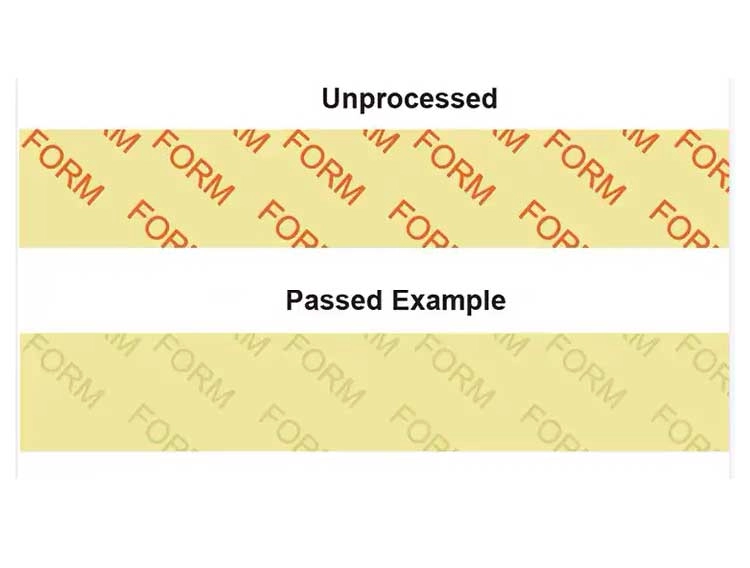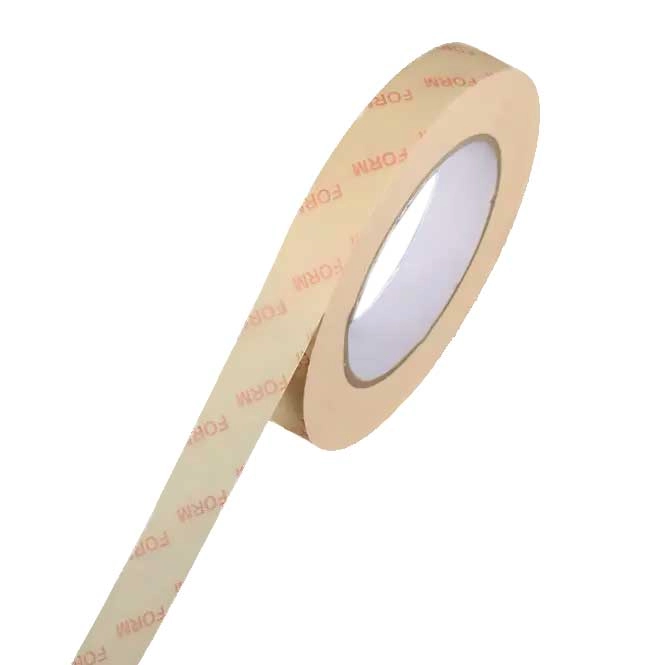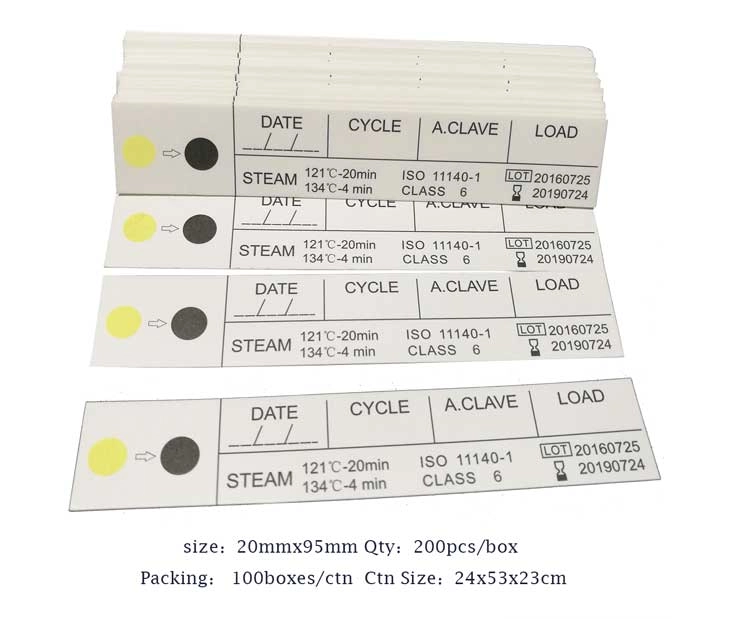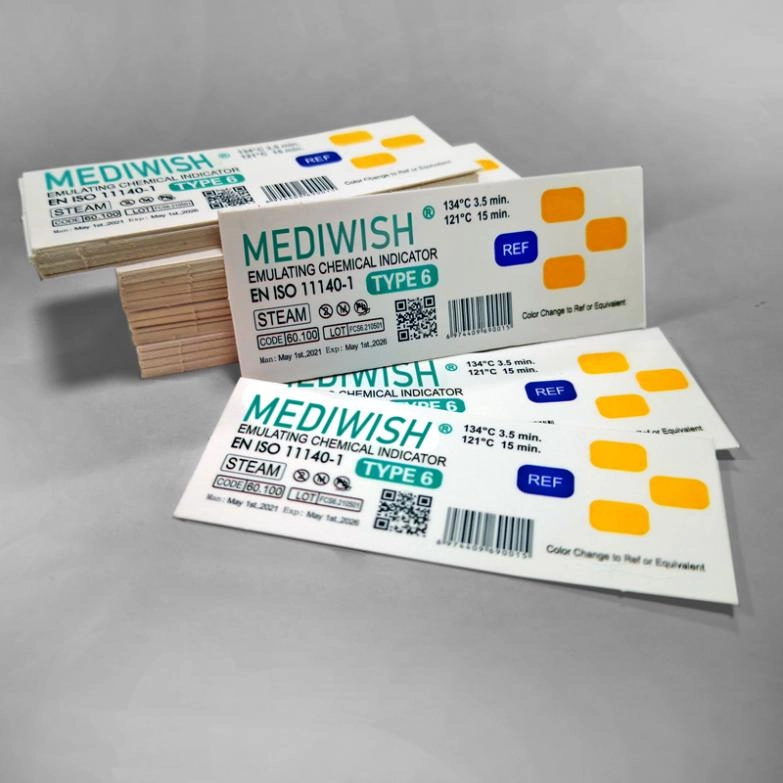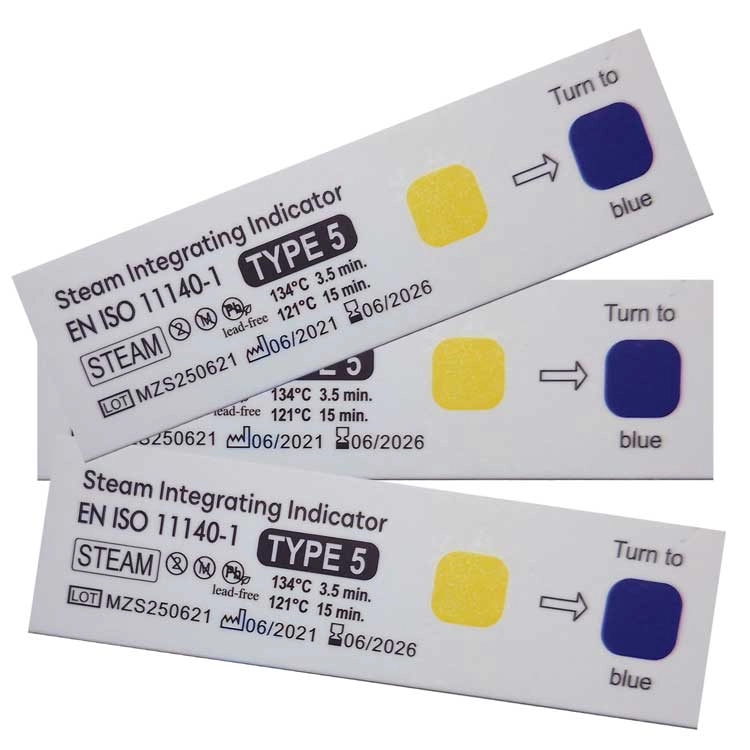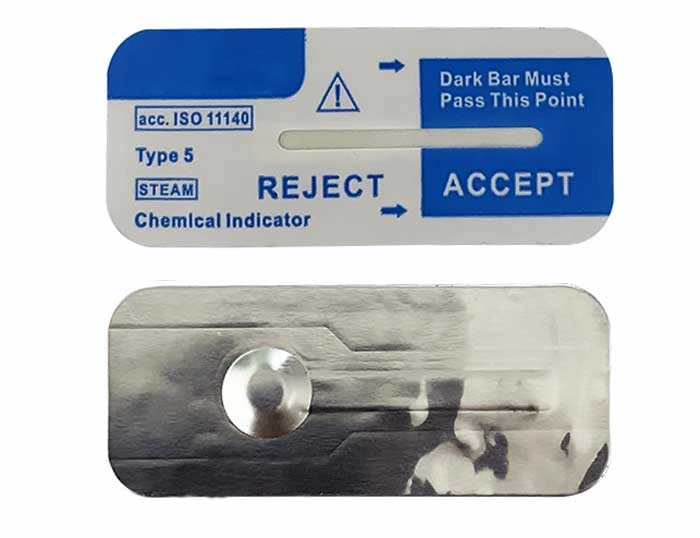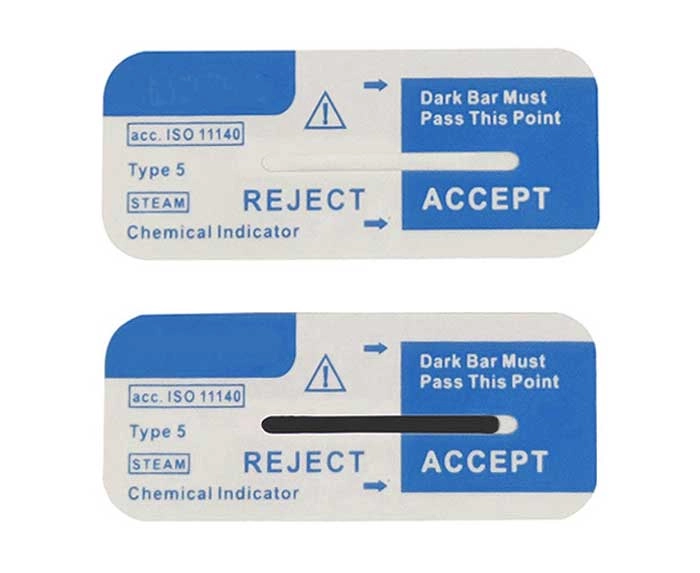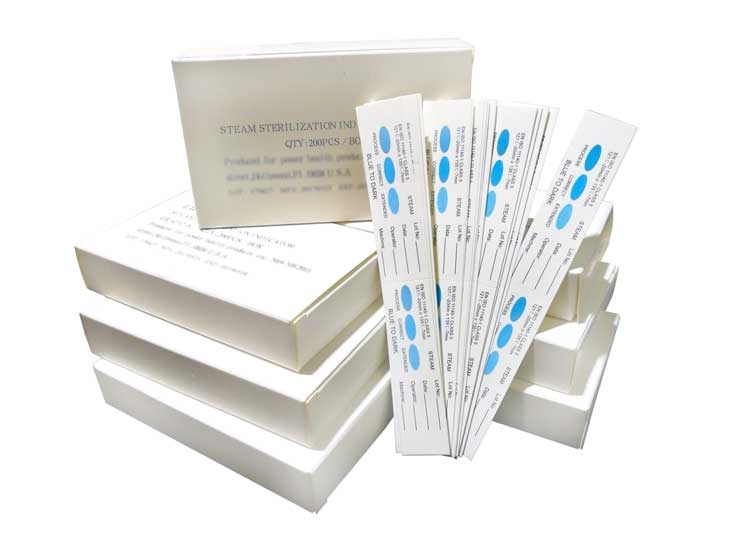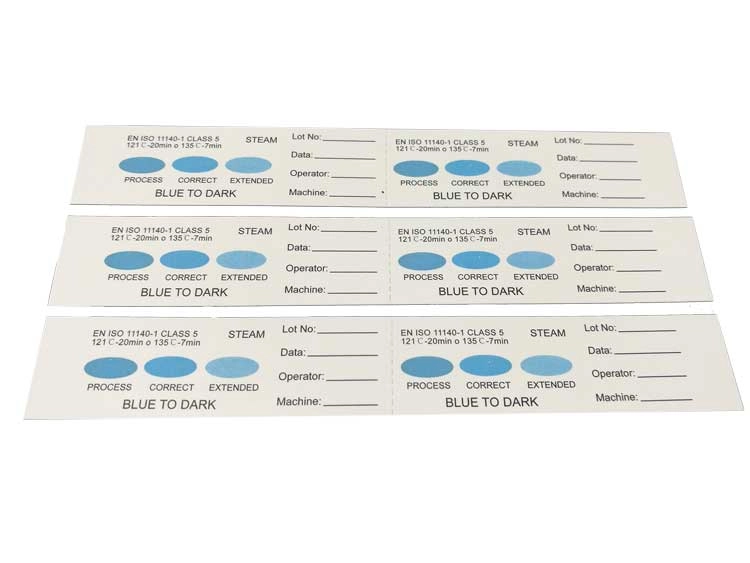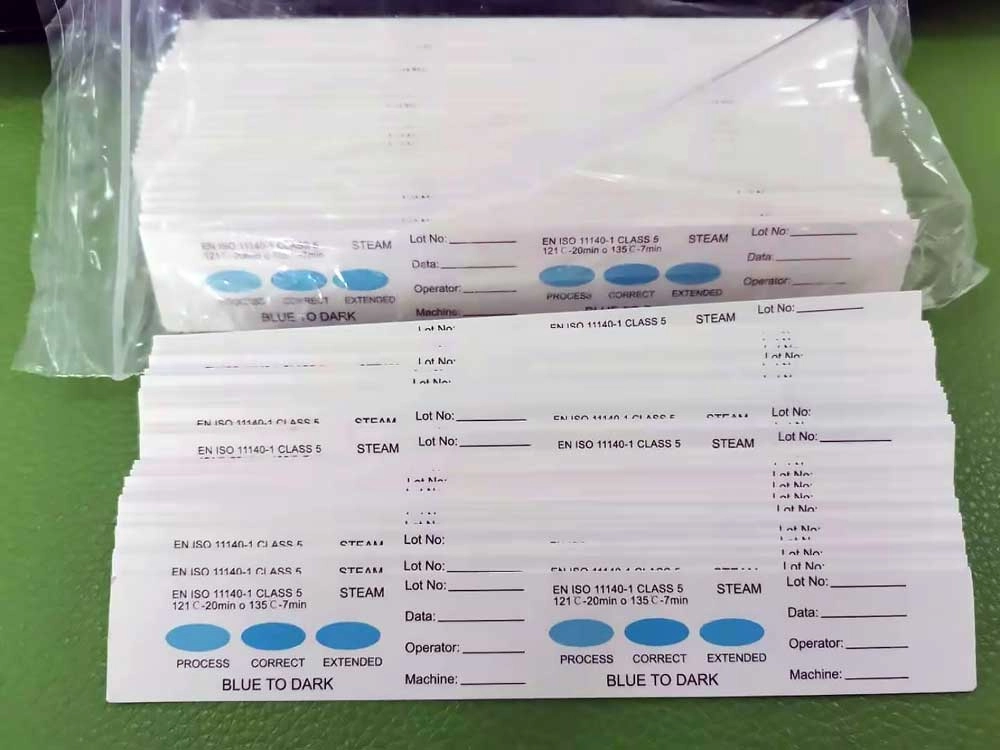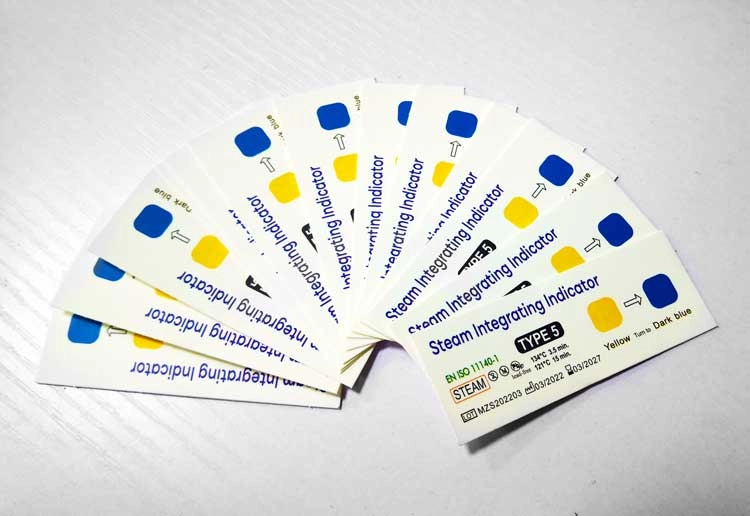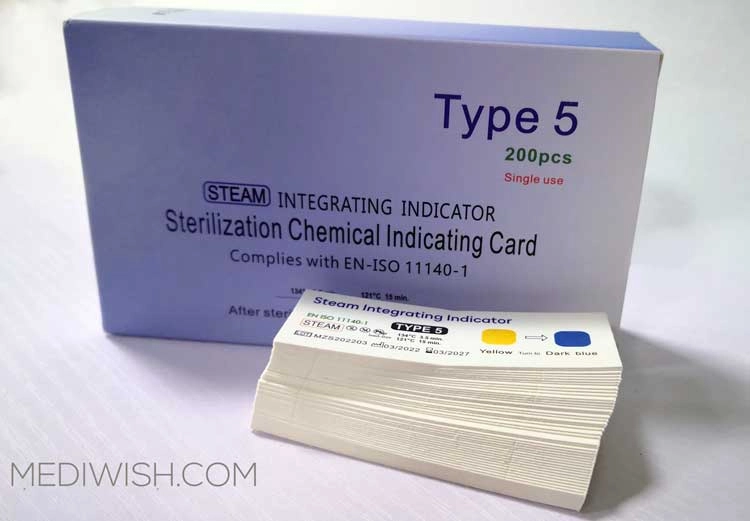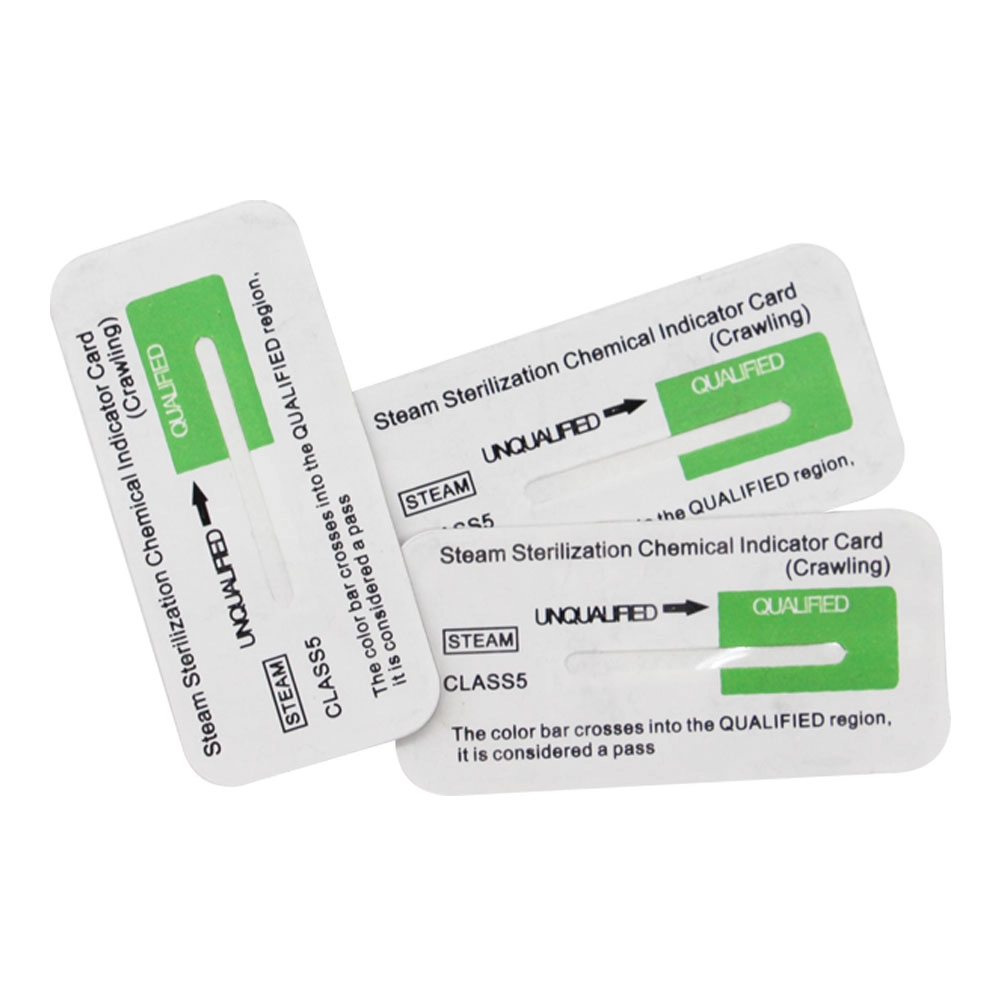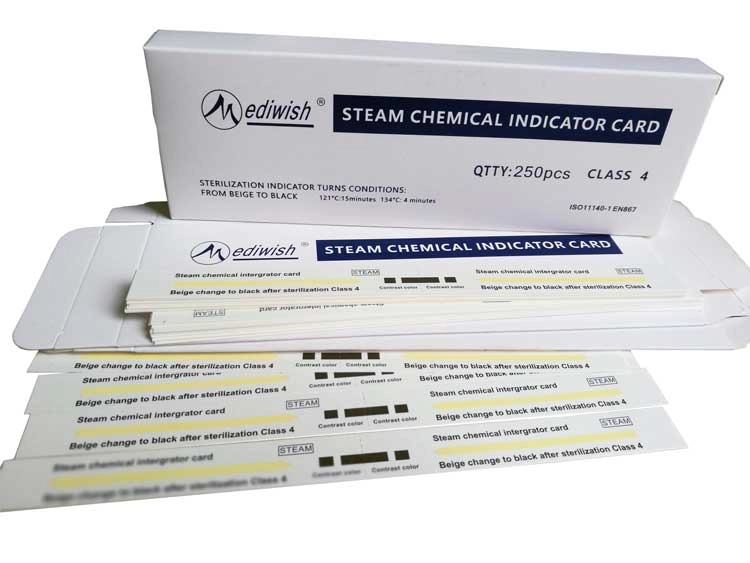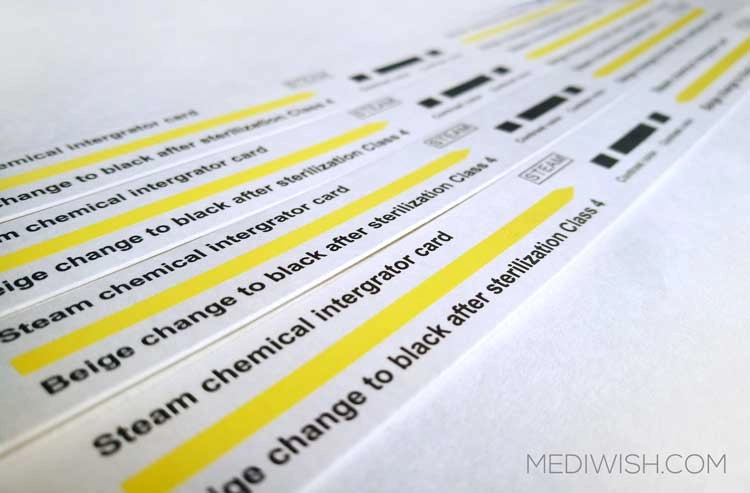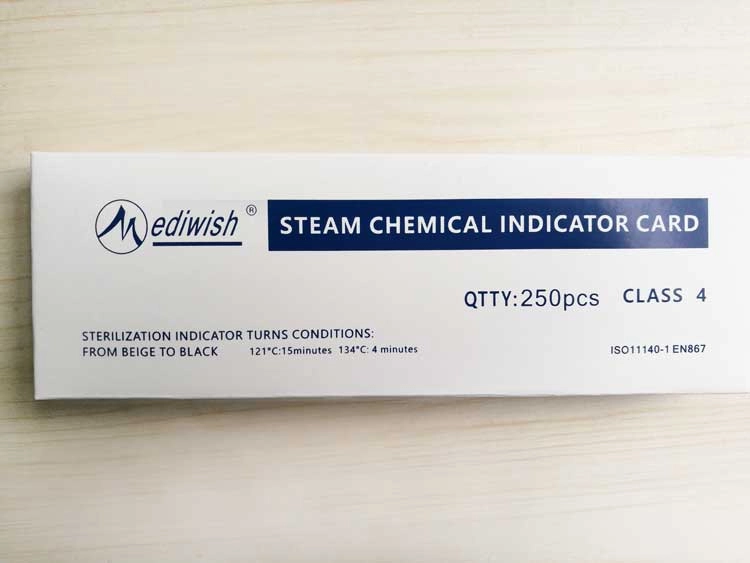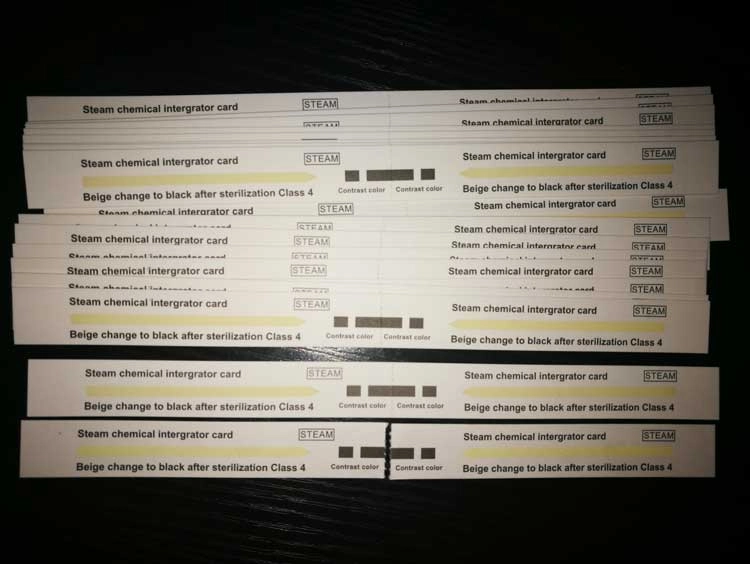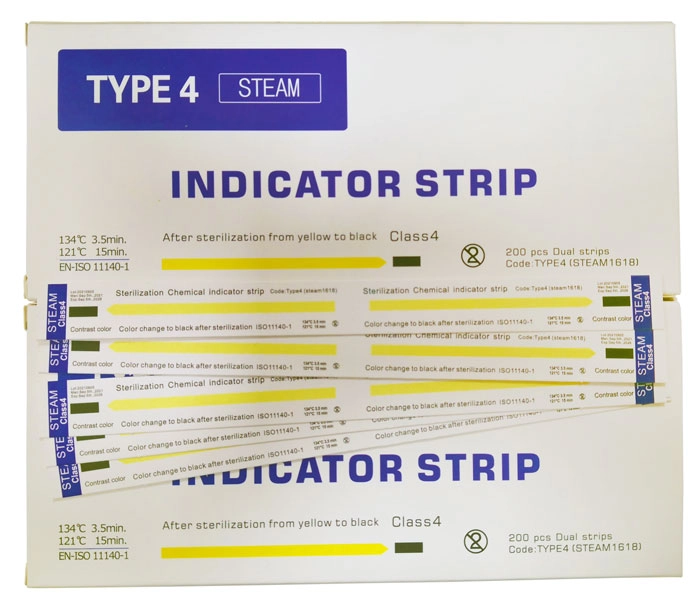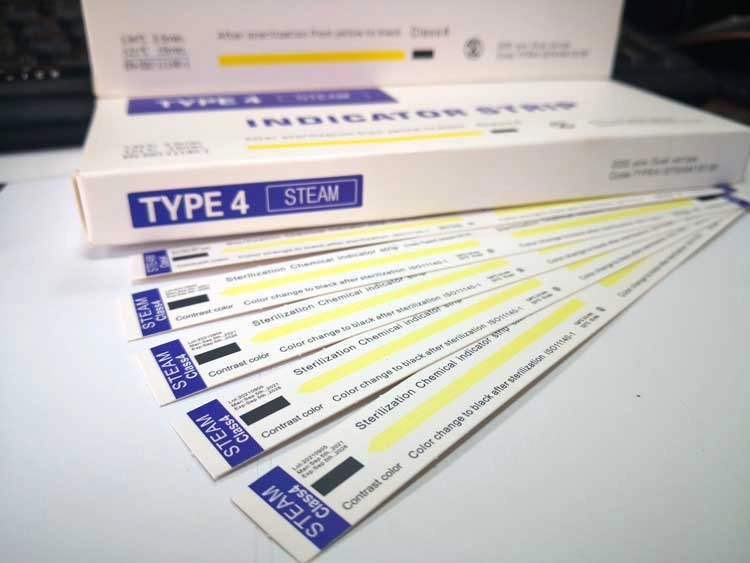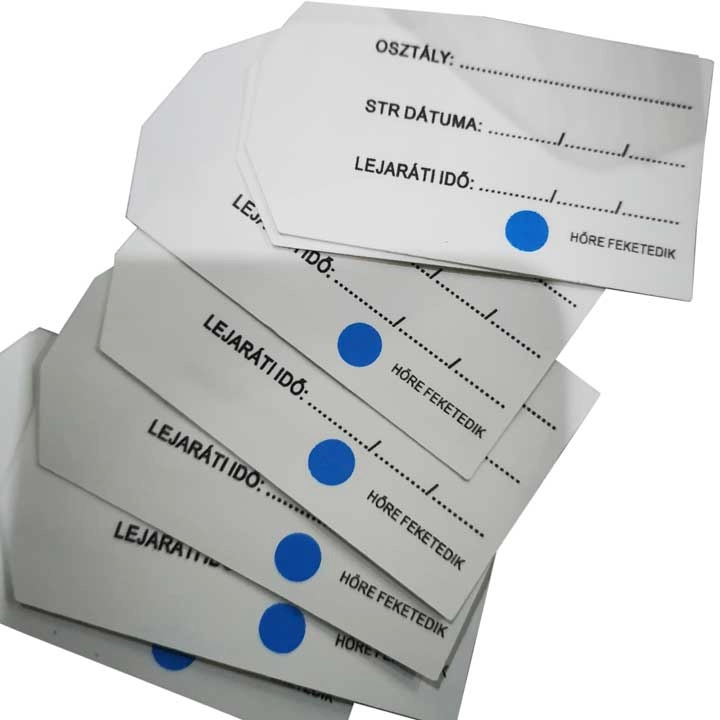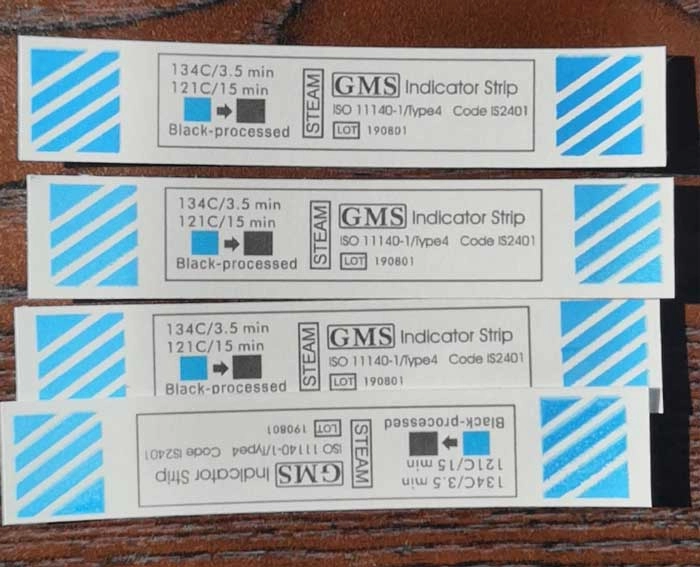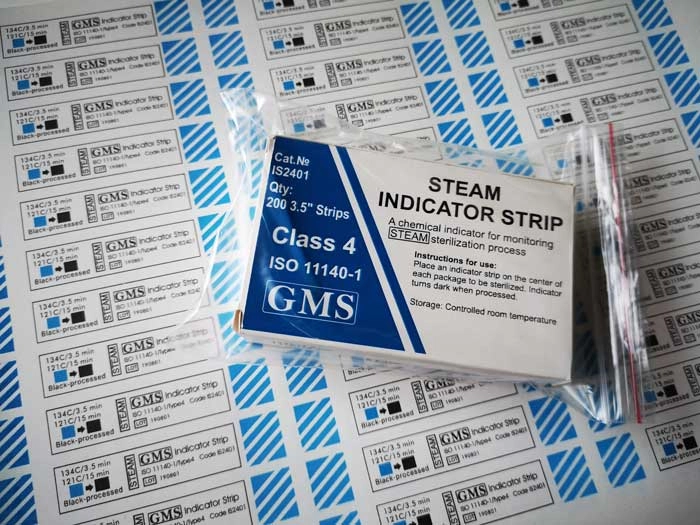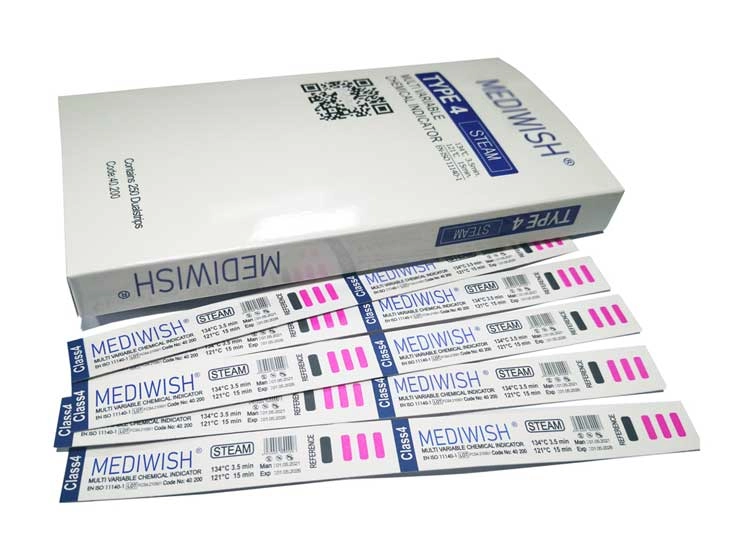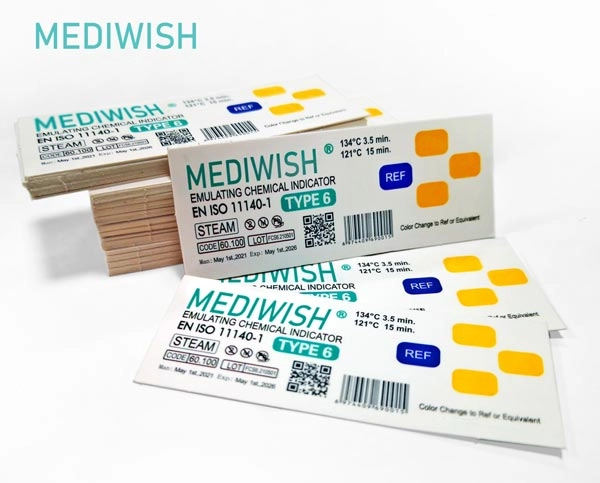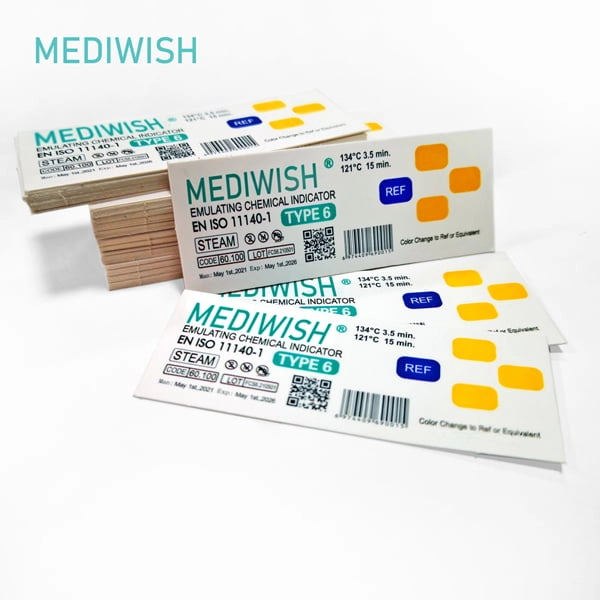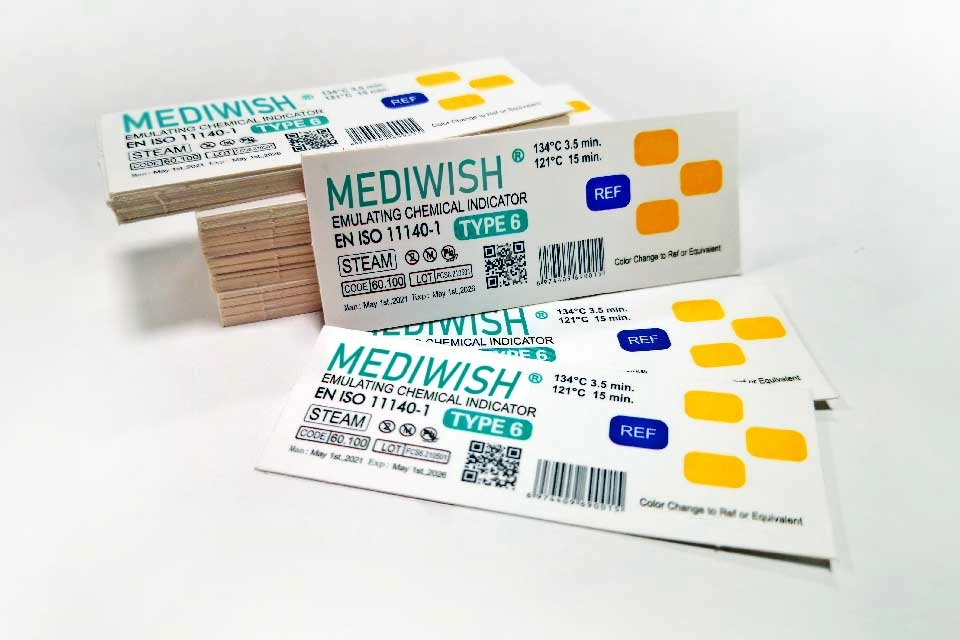How do Chemical Indicator Strips Work?
Chemical indicator strips for autoclaves work based on a simple principle: they contain a chemical or ink that changes color when exposed to specific sterilization conditions. These conditions typically include temperature, pressure, and time. When placed inside an autoclave along with the items being sterilized, the indicator strip undergoes a color change if the desired conditions have been achieved. This change in color provides a visual confirmation that sterilization has occurred. It is important to note that chemical indicator strips do not directly measure microbial kill or sterilization efficacy; instead, they serve as a reliable guide to ensure that the necessary conditions for sterilization have been met.
Importance of Using Chemical Indicator Strips in Autoclaves
The use of chemical indicator strips in autoclaves is crucial for several reasons. Firstly, they provide a quick and easy visual confirmation that the sterilization process has been successful. This is especially important when dealing with critical instruments or medical devices that must be completely free of any pathogens or contaminants. Secondly, chemical indicator strips act as an additional layer of assurance, complementing the parameters monitored by the autoclave equipment itself. While autoclaves have built-in temperature and pressure sensors, these may malfunction or provide inaccurate readings. By using chemical indicator strips, sterilization professionals can have greater confidence in the effectiveness of the process. Lastly, chemical indicator strips help in maintaining a reliable record of sterilization, which is essential for compliance with regulatory standards and guidelines.
Different Types of Chemical Indicator Strips for Autoclaves
There are various types of chemical indicator strips available for autoclaves, each designed to monitor different sterilization parameters. One common type is the heat-sensitive indicator strip, which changes color when exposed to the desired temperature range. This type is typically used for monitoring the heat sterilization process. Another type is the steam indicator strip, which changes color when exposed to steam. These strips are specifically designed for steam sterilization methods commonly used in autoclaves. Additionally, there are chemical indicator strips that are sensitive to both heat and steam. These versatile strips provide a dual indication of both temperature and steam exposure. It is important to select the appropriate type of chemical indicator strip based on the specific sterilization method being employed.
How to Properly Use Chemical Indicator Strips in Autoclaves
Using chemical indicator strips in autoclaves requires careful attention to detail to ensure accurate results. Here are some essential steps to follow:
- Select the appropriate type of chemical indicator strip based on the sterilization method being employed.
- Place the indicator strip inside the autoclave, ensuring it is positioned in a location representative of the load being sterilized.
- Run the autoclave cycle according to the manufacturer's instructions, making sure all necessary parameters are met.
- After the cycle is complete, carefully remove the indicator strip from the autoclave using sterile forceps or gloves.
- Allow the strip to cool down before examining the color change. Refer to the manufacturer's instructions for the specific interpretation of the color change.
- Record the results and any necessary information in the sterilization log or documentation.
By following these steps, sterilization professionals can effectively utilize chemical indicator strips to monitor the success of the autoclave sterilization process.
Interpreting the Results of Chemical Indicator Strips
Interpreting the results of chemical indicator strips is a critical step in ensuring the accuracy of the sterilization process. Each manufacturer provides specific guidelines for interpreting the color change on their indicator strips. Generally, a change in color from the initial state indicates that the desired sterilization conditions have been achieved. However, it is important to note that different indicator strips may have different color indications for the same result. Therefore, it is crucial to refer to the manufacturer's instructions and color chart provided with the strips to accurately interpret the results. In case of any doubt or inconsistency, it is advisable to consult with the manufacturer or a qualified sterilization professional for clarification.
Best Practices for Storing and Handling Chemical Indicator Strips
Proper storage and handling of chemical indicator strips are important to maintain their effectiveness and reliability. Here are some best practices to follow:
- Store the indicator strips in a cool, dry place away from direct sunlight and excessive humidity.
- Keep the strips in their original packaging until ready for use to protect them from exposure to environmental factors.
- Check the expiration date of the indicator strips regularly and discard any expired ones.
- Handle the strips with clean, dry hands or sterile gloves to prevent contamination.
- Avoid touching the reactive area of the strip, as it may interfere with the accuracy of the results.
- Follow any additional storage and handling instructions provided by the manufacturer.
By adhering to these best practices, sterilization professionals can ensure that the chemical indicator strips remain in optimal condition for reliable use.
Frequently Asked Questions about Chemical Indicator Strips for Autoclaves
- Can chemical indicator strips be reused? No, chemical indicator strips are designed for single-use only and should be discarded after each cycle.
- Can I rely solely on chemical indicator strips to confirm the effectiveness of sterilization? Chemical indicator strips provide a valuable visual confirmation, but they should not be the sole method of determining sterilization efficacy. They should be used in conjunction with other monitoring methods and guidelines.
- Can indicator strips be used for monitoring other sterilization methods apart from autoclaves? Yes, there are chemical indicator strips available for other sterilization methods like ethylene oxide and dry heat. It is important to select the appropriate type based on the sterilization method being used.
- Do chemical indicator strips have any regulatory standards? Yes, chemical indicator strips must comply with applicable regulatory standards, such as ISO 11140. It is important to ensure that the strips meet the necessary requirements before use.
- Can I interpret the color change on the indicator strip after a long period? It is recommended to interpret the color change as soon as possible after the completion of the sterilization cycle. Delayed interpretation may result in inaccurate results due to potential fading or discoloration of the strip.
Where to Buy Chemical Indicator Strips for Autoclaves
Chemical indicator strips for autoclaves can be purchased from Mediwish Co., Ltd. We specializing in sterilization products.
Conclusion and Final Thoughts on Using Chemical Indicator Strips in Autoclaves
Chemical indicator strips for autoclaves are valuable tools that provide a visual indication of the sterilization process's success. By following the guidelines outlined in this guide, sterilization professionals can effectively utilize these strips to enhance the reliability and safety of the sterilization process. Remember to select the appropriate type of chemical indicator strip, follow proper usage procedures, interpret the results accurately, and adhere to best practices for storage and handling. By doing so, you can ensure the optimal performance of your autoclave and maintain the highest standards of sterilization in your practice or facility.


